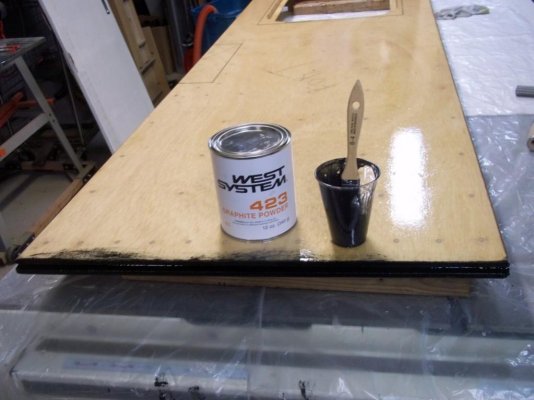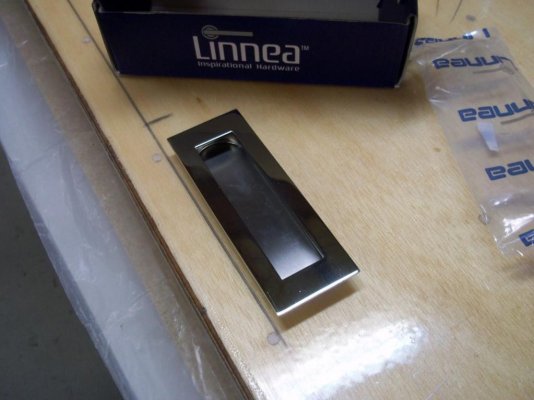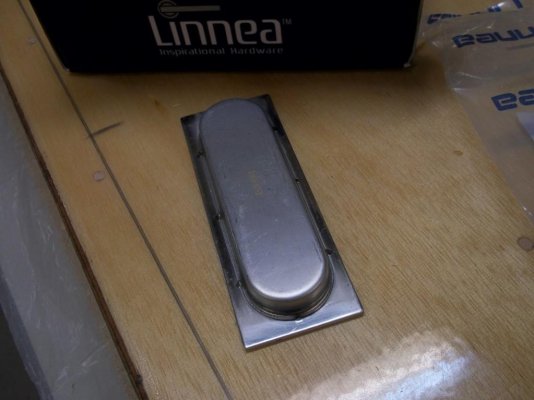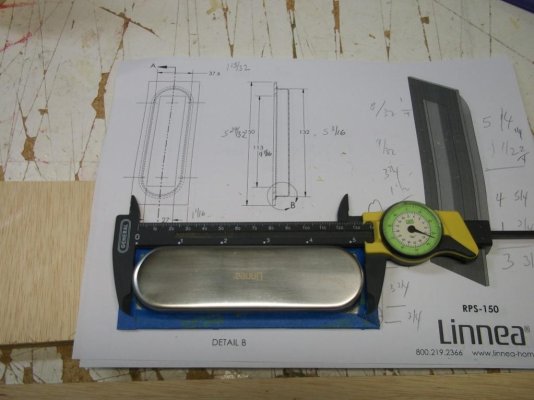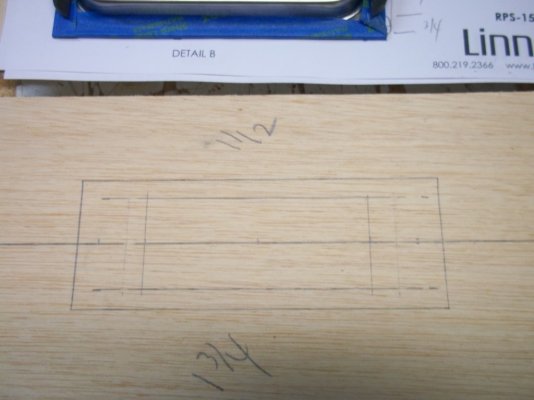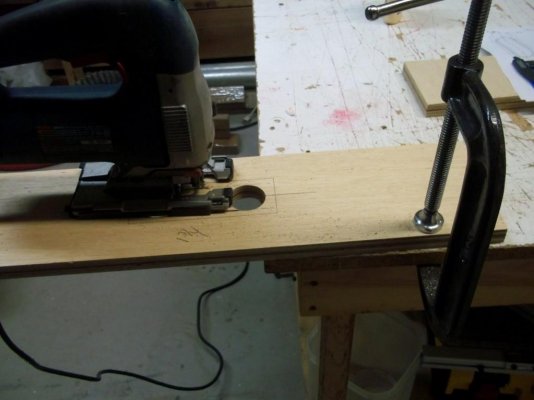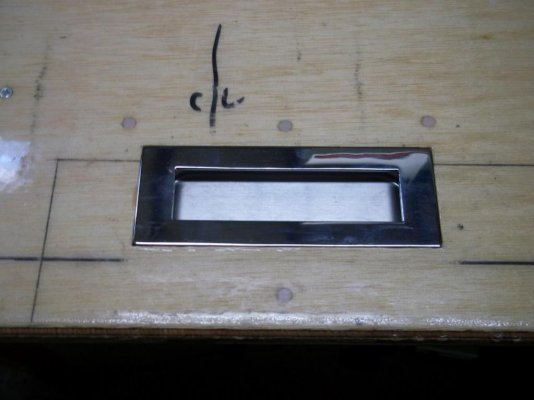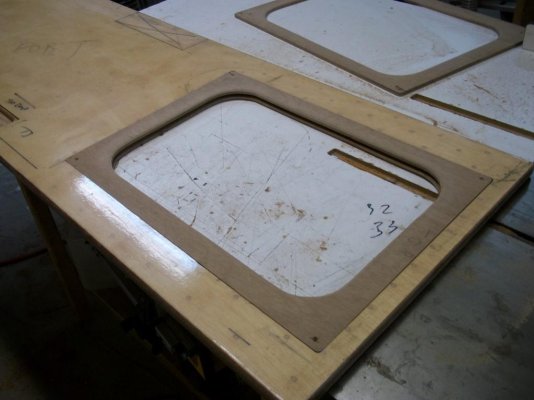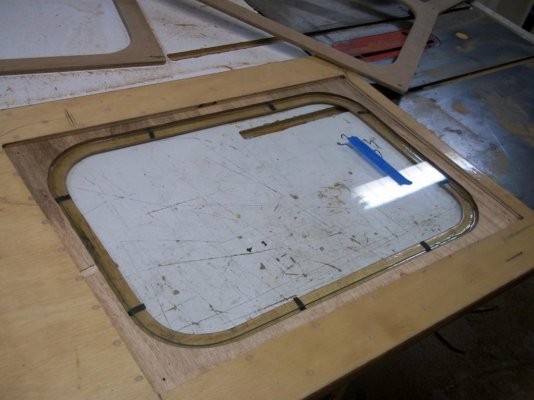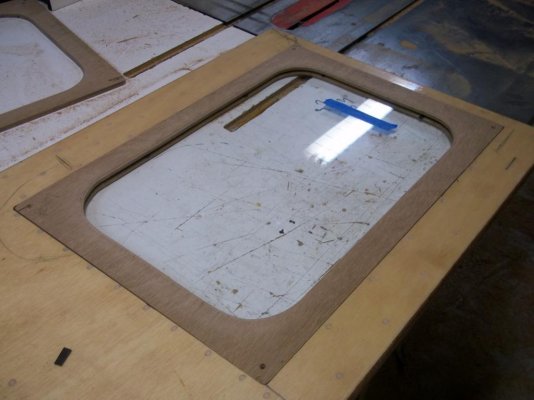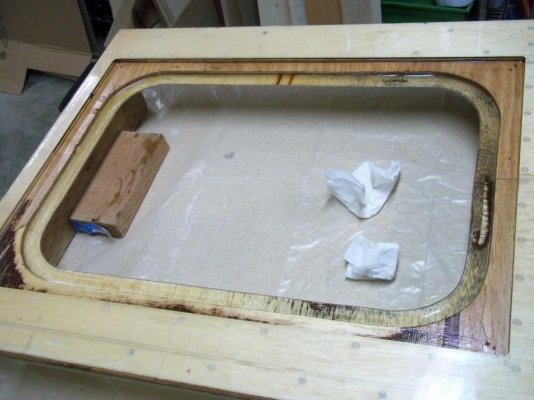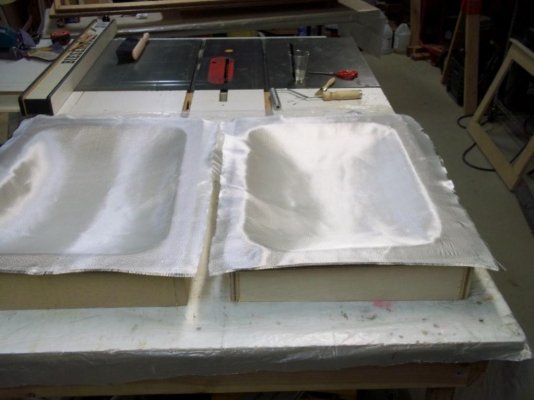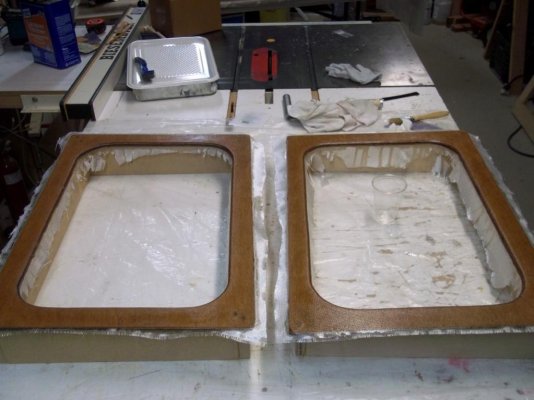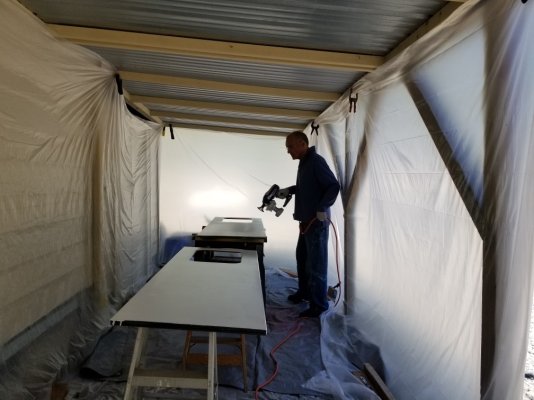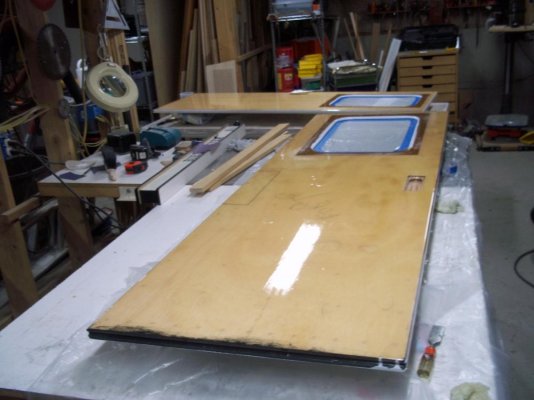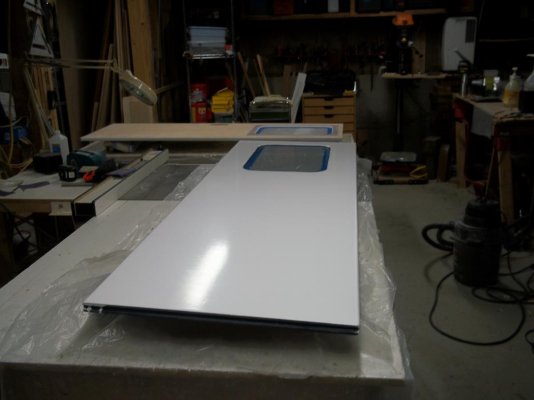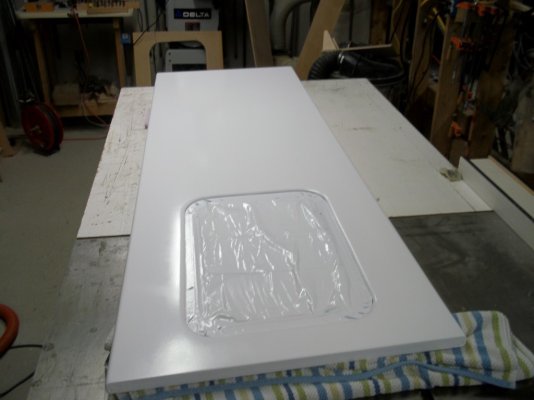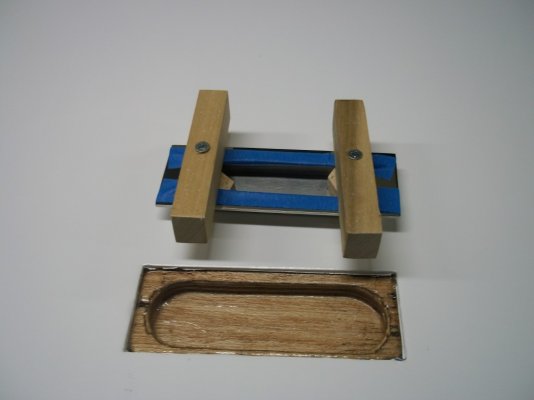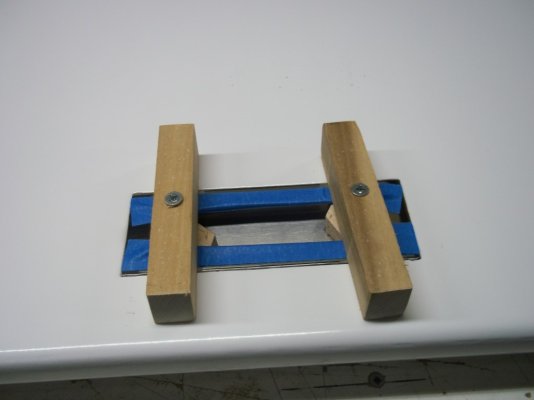- Joined
- Nov 8, 2012
- Messages
- 2,315
- Location
- USA
- Vessel Name
- Sandpiper
- Vessel Make
- Bluewater 40 Pilothouse Trawler
After a 5 month break, back to working on the pilothouse doors. Replacing boathouse floatation and floors took up most of the fall. Some maintenance on Sandpiper and projects around the house took up the rest of the time.
My wife reminded me at the beginning of the year that I needed to finish the doors so we can go boating this summer.
In September, I completed the glass fabric application to the doors and filled the weave with epoxy before I quit working on it.
I routed an oversize groove at the bottom of each door which will ride on the bottom track of the door opening. The groove is being coated in these pictures with a mixture of System Three Epoxy and West System 423 Graphite Powder. The graphite powder will create a low-friction surface for the doors to slide on the tracks. The 423 also increases scuff resistance and durability. I use the epoxy/graphite mixture often as a low-load, low-speed bearing surface.
After several coats of the epoxy/graphite cures, it will be polished smooth.
My wife reminded me at the beginning of the year that I needed to finish the doors so we can go boating this summer.
In September, I completed the glass fabric application to the doors and filled the weave with epoxy before I quit working on it.
I routed an oversize groove at the bottom of each door which will ride on the bottom track of the door opening. The groove is being coated in these pictures with a mixture of System Three Epoxy and West System 423 Graphite Powder. The graphite powder will create a low-friction surface for the doors to slide on the tracks. The 423 also increases scuff resistance and durability. I use the epoxy/graphite mixture often as a low-load, low-speed bearing surface.
After several coats of the epoxy/graphite cures, it will be polished smooth.
Attachments
Last edited:

